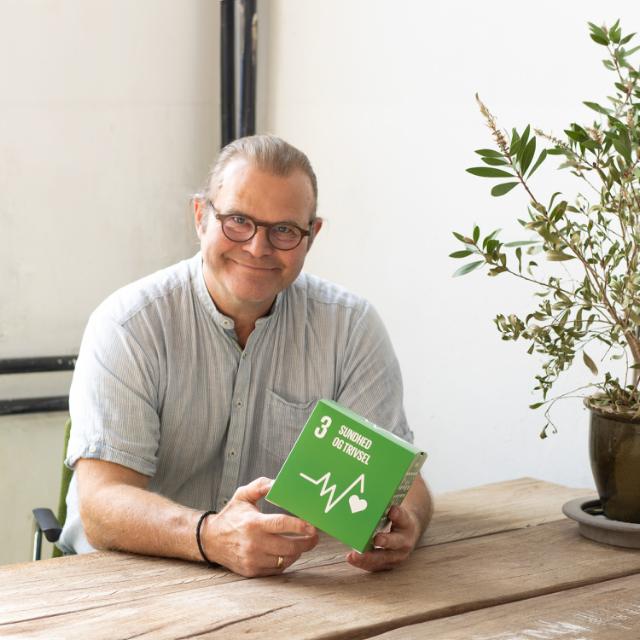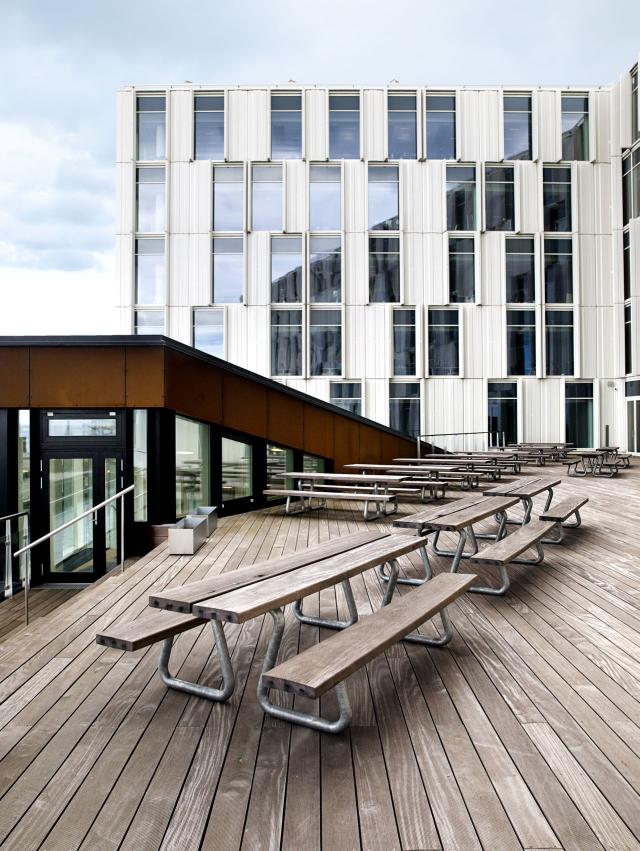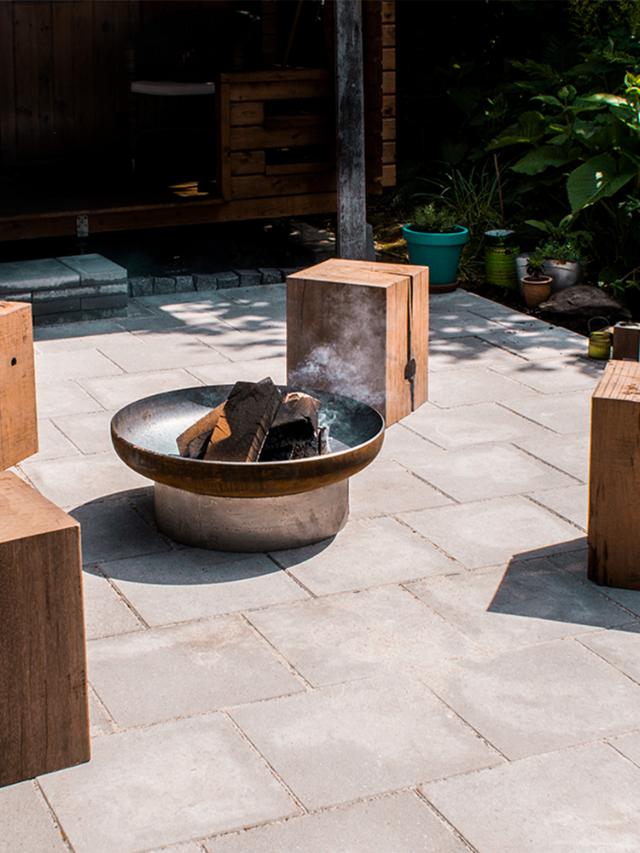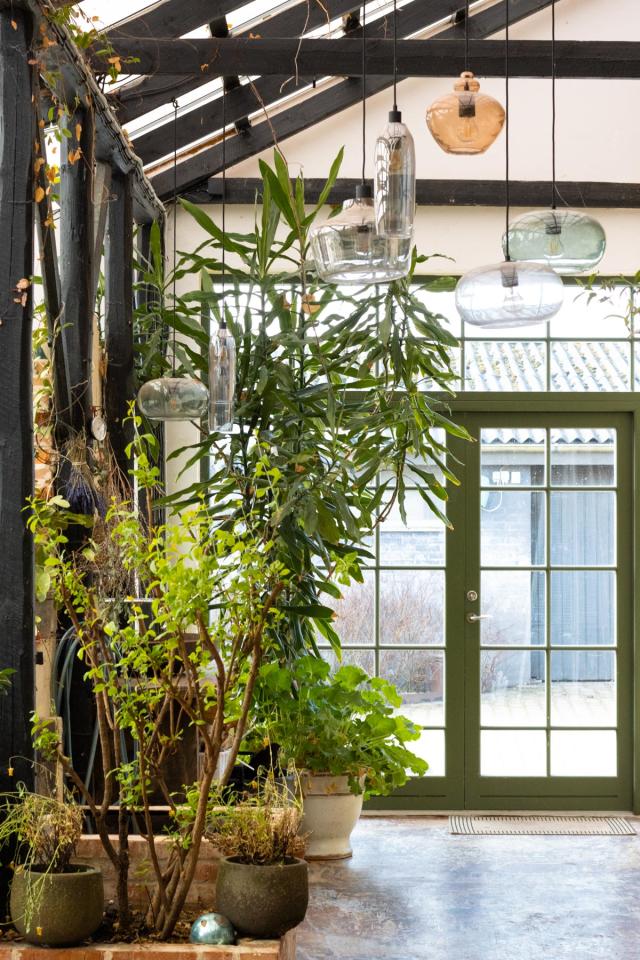


An orangery with focus on functionality and soul
Are you dreaming of an orangery, but still need inspiration on how to create the perfect room before you start the project? Then keep reading as we go on a journey filled with inspiration with Carsten Thor, the CEO of Thors Design, where we go into details with his experience and best tips from his own rustic heaven.

Its mid-March. It is cold, but the sun is shining, and the world is bright. The very first sprouts have begun to poke out of the frozen ground – sending a feeling of spring throughout the country. Yet there is still almost a month until we can start putting seeds in the garden, and another two weeks before the young leaves will paint the forest green.
However, there is one place where we can throw our heavy winter jackets to the side and enter a warm oasis – all around the country’s orangeries. Right now, the temperature inside the orangeries approaches 15°C and offers us a place where we can start the spring early and enjoy our lunch, while we dream about the lush green of summer. For that reason, orangeries are becoming more widespread and, a dream to many people.
5 facts about orangeries
-
A rustic space with a southern atmosphere.
-
Originally it they were a wintering place for citrus plants (formerly called orange trees).
-
The citrus plants cannot tolerate temperature below 10C to thrive. And if you have more tropical plants such as banana palms in your orangery, the temperature should ideally be kept above 15C.
-
Orangeries were incredibly popular in the 18th century when they were built on estates and manors to show their connection to the colonies in the tropical countries.
- An orangery offers a different and exotic place to be, and the opportunity to extend the summer well into both spring and autumn.
Inspiration from the neighbours
Carstens wish for an orangery started 10 years ago when many of his neighbours built them. They were all created in the traditional orangery style – as a winter storage for citrus plants – and yet they were all very different. Carsten and his wife Anika enjoyed their visits in the southern-inspired spaces and absorbed inspiration on what worked and what didn’t.
Amoung the visits they saw one with large window sections, and that just did something for the “hygge”, explains Carsten. Him and his wife quickly agreed that their orangery instead needed to have windows with smaller glass panes and bars.
They also quickly agreed that the orangery should be built as an addition to the house, so they could enjoy it more. Two of the couples they knew who had orangeries, had built them as a separate unit from the house, and they rarely used the orangery in their everyday life, but mostly for special occasions.
Recycling of existing materials
They started the project with an old barn/outbuilding which had been used for a garage and storage. Soon after the rest of the project followed.
Carsten has always had an interest for interior design, and you can clearly see that he has a sense for both the big picture and the small details.
Anika and Carsten had specific wishes for their orangery. They wanted it to have the traditional Mediterranean style and be a space that was filled with soul, and very functional. From there they divided the tasks – Carsten was responsible for the interior design and his wife the plants.
Having the starting point as the old barn gave them many opportunities to create authentic rustic details. Many of the orangery’s details were heavily based on reusing the materials left over from the existing building.
For example, Carsten chose to let a piece of the brick wall with a window remain in the middle of the room. And, the bricks left over from the deconstruction of the old building were cleaned and reused for the raised plant beds. In fact, only the windows, roof and floor were new, the rest was reused from the existing building – either by letting it remain or used in new ways.
5 Facts About Carsten
-
He was originally educated as a car mechanic and has been a furniture designer for 21 years.
-
He has always had a passion for interior design.
-
For Carsten, good interior design is when a home is created and there is no doubt that it can be used. A place to stimulate the sense and one can explore in. A place where there is soul, and one feels content.
-
Quality is important for him. Things need to and should last. Which is also a recurring theme in the furniture from Thors Design.
-
His favourite detail from the orangery is the floor, which in painted by the artist Per Hillo. In second place is the water basin, which is his own invention.
The soul is in the rustic
Rustic elements have a special place in Carsten’s hearth, and he has an eye for them to. When the bricklayers wanted to sand down the top row of the bricks in the window ledge after cutting a hole, Carsten stopped them immediately; no detail was to rustic.
“It does something for the soul”, he explained when I ask about his penchant for the rustic details. “It gives and warm and cosy feeling, and one desires to be in the room and to use it. And there is no doubt that the room can be used, and nobody should be afraid to make scratches in it.”
“If a home looks to new and nice you don’t really want to occupy it”, he continues. “There is nothing worse than coming into a chalk-white Kähler-home and not knowing where to put down your beer.”



Place everything close to the heart of the home
“What do you use the room for?” I ask Carsten and he tells me they have breakfast and lunch there on the weekends – when there is time to relax with it. He also often has nn afternoon nap in the bed in the loft or on the blue sofa bathed in sunlight.
They use it often, from mid-March when the temperature gets around 15°C and all the way into late October. Therefore, the room extends the summer into the cooler spring and autumn months.
Throughout the winter the orangery is kept at 10°C so the citrus plants can survive - too cold to use – and the winter weather pulls them into their warm living room.
Carstens says that they have deliberately arranged their house, so everything is close to its center. “That is the best piece of advice I can give” he says, “because when things are close to the core, then you use it.”

The details – the floor
The floor is one of the most eye-catching things in the orangery. It catches your eye as soon as you walk in. It has a symbolic message that ties together all the elements in the orangery in a heartful and unique way.
“The floor is awesome” exclaims Carsten with light in his eyes. However, the journey there almost cost him his marriage. “That’s how it always is when the floor needs to be changed in this house” he explains. First it was the bedroom. But the marriage still holds – maybe because Anika is smart enough to let Carsten have his way in the end.
The road to get there was not straightforward though. The first step was easy. The existing floor was in too bad shape to keep, so it had to go. They put in floor heating and a new concrete. The problem arose when they had to decide what type of flooring there should be. They wanted something that had a raw and rustic look. “I would have a hard time living with something that looked brand new” explains Carsten.
The original idea was to use wood tiles, but they were running out of time. They looked into tiles; however, they couldn’t quite find the right ones. Then they considered New Yorker flooring, which is a surface layer poured over concrete to make it look old. However, Carsten had never seen it work out properly – “It always looked new no matter what.”
Then Carsten thought of the artist Per Hillo. “He normally paints on everything”, said Carsten, so he called him to check out if a floor painting was possible to pay for.
“I like to say it costed 10,000kr. for the floor. But that is 10,000kr more than what it would have costed for tiles.” The result was clearly worth it though - and perhaps almost ruining the marriage over it – in Carsten’s mind. “The floor is awesome” he repeats.



The details – the water basin
The water basin came from Anika’s wish to have running water in the room, for the calming effects running water has on the mind.
They visited many orangeries where there was a fountain – “but why was it there?” Carsten felt that it seemed artificial. If there should be running water in the orangery, then it should be water they could use for something.
He put his old skills as an automatic mechanic to the test, and by using a level float, a solenoid valve and a pump from a fountain, he constructed a water basin that can both provide running water and also give them easy access to water the orangery's many plants.
While the pump ensures that the water recirculates and quietly flows out of the faucet, the level float kicks in when you remove larger amounts of water and fills the pool again. Carsten illustrates how it works, and it's smart! In no time at all, he waters a large orange tree that stands nearby.
“It’s a very easy solution”, he says. So easy that he believes that anyone can copy it.

// About the basin
The water basin is created from a deep sink, a faucet, a level float, a solenoid valve and a pump. The pump recirculates the water and ensures running water out of the tap, while the level float opens the solenoid valve and lets new water in when large amounts of water are removed from the sink.

5 Tips For Your Own Orangery
-
Use large windows with smaller glass panes and bars – it creates a cosy atmosphere.
-
If possible, use already existing materials, or buy reused materials – it creates a rustic look and brings soul to the space.
-
Use a thermal roof without colour. Although you may be tempted by the glow the colour will bring to the room, it won’t allow enough light in for the citrus plants.
-
Place everything close to the center of the home – then you will use it more.
-
Try – in the best Feng Shui style – to have all the elements (earth, air, fire and water) represented in the orangery if possible. It makes the soul happy.
The details - the wine room
One of the first things they made plans for was the wine cellar. The cellar is in the innermost part of the orangery where there is no floor heating or windows. Therefore, the temperature remains the same and rarely over 14°C.
When I asked Carsten if he had a passion for wine, he answered that he was for sure not uninterested. We opened the large swinging door – an old door from a deconstructed cold room – and are met with rows of wine bottles on rustic iron wood shelves.
It’s mostly Italian wine found on the shelves, but also a little from France. Pinot Noir is his favourite grape, he says, and he is always after a good pinot noir with notes of nuttiness.

// Vinrummet gemmer sig bag denne smukke metaldør


The details – the art
It is not only plants that fill the room, but also art. We quickly see that it is a place to explore because little treasures – with emotional value we learn – are hidden everywhere.
Amoung the art there is works that are made by friends and family and known artists. The first piece he shows us is an acrylic on canvas, painted by Knud Slosser – a local hobby-artist who was a milk consultant at the dairy where Thors Design has its office and showroom today. The painting depicts a hilly landscape, which is Trehøje Bakker (Three Hills), says Carsten. Knud was a friend of Carsten’s mother; therefore, the painting was a gift. Carsten was often at the old dairy with him as a boy, and you can clearly see that the painting holds equal parts aesthetic and emotional value for him.
In the corner by the sofa, there is a beautiful cactus that was made by his second youngest son in sixth grade that fits in perfectly with the style of the orangery. There is also a Holmegaard glass collection from Per Lukter, which Carsten have been hunting for a long time for. He would like more of the yellow pieces, which are the hardest to find. On the shelf, the collection looks like a deep blue and vibrant wave, and when you use them as a table setting, they are just beautiful, he says.
Afterwards we were lucky to witness his skills on the Tibetan singing bowl before showing a model of a sculpture designed by Paul Cederdorff in honour of those who fell at the Battle of Jutland in 1916.

// Akvarel af Knud Slosser

// Kaktus lavet af Carsten søn

// Gallerivæg gemt bag fritlagte bjælker

// Carstens Homlegaard glassamling
The details - the plants
As mentioned, the plants are Anika's department. Based on their shared desire for a traditional Mediterranean theme, she has therefore had carte blanche to fill it up, and is also committed to keeping it. We go hunting in the oasis and botanize our way to, among other things, avocado, jasmine, comquad, olive, orange, fig, pomegranate - in addition to basil and other herbs.
There are also some giants growing around, which are houseplants from his late father, which were put out here after his death.
Not all the trees bear fruit – perhaps they lack a partner or something else critical – but neither Carsten nor Anika cares. The main reason they have the plants is for the sake of well-being, and not to be able to harvest from them. In return, they put a lot of effort into their kitchen garden, which can keep them more or less self-sufficient over the summer.
And then they certainly also enjoy being able to harvest a perfectly ripe orange or lemon every now and then.


The details - the roof
When he had to choose the roof, he made a mistake says Carsten. When we look up, you can see that one part of the orangery has milky white thermal glass, while the other part has bronze coloured thermal glass. Originally, they had bronze-coloured thermal throughout because Carsten liked the colour from the glass. But it did not let in enough light, for the light-demanding citrus plants. Therefore, the glass in the roof needed to be replaced. So far they have replaced part of the roof while the other half is on his to do list.

A Collaboration With Møltrup Farm
All bulwarks that become Thors Design furniture are sawn into planks at Møltrup Saw Mill. A collaboration that both makes a difference for men on the fringes of society and enables Thors Design to place its entire production in Denmark.

Heavy, Weather Resistant Furniture for the Rooftop Terrace
Decorate your rooftop terrace with heavy, weather resistant furniture made from reclaimed harbour wood and enjoy a long season without worries.

4 ways to use a fire pit in the garden
A fire pit can be used for much more than roasting marshmallows! Read along here where we give you our 4 best suggestions on how you can use your fire pit.

An orangery with focus on functionality and soul
Come and visit Carsten Thors Mediterranean paradise and get inspiration for your own orangery!



